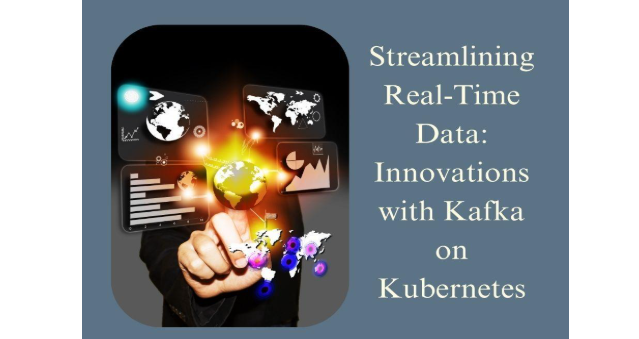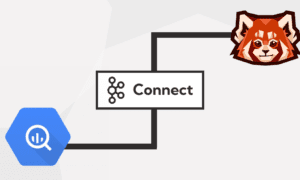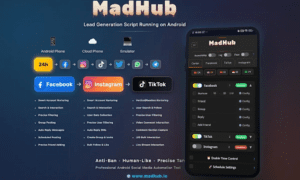By combining the strengths of Apache Kafka and Kubernetes, Sudheer Vankayala explores a transformative approach to real-time data processing, addressing challenges in scalability, reliability, and cost. His work as a seasoned Data Architect bridges advanced distributed systems with practical deployment strategies, pushing the boundaries of event streaming technology.
Reinventing Data Processing for Modern Needs
The rapid increase in global data volumes necessitates a transition from traditional batch processing to agile, real-time architectures. Kafka’s distributed streaming capabilities deliver low-latency data processing, making it well-suited for mission-critical applications. When combined with Kubernetes, organizations can harness the power of container orchestration to ensure scalability, resilience, and efficient resource management. This synergy empowers businesses to handle escalating data demands seamlessly, enabling them to build robust, scalable systems that adapt to the evolving needs of modern data-driven environments.
The Core of Scalable Architectures
Kafka’s distributed commit log system forms the backbone of modern real-time data architectures, offering fault tolerance and durability by persisting and replicating data across brokers. This design ensures reliability even under the most demanding workloads. Kafka’s partition distribution further enhances performance by enabling fine-grained parallelism, allowing producer throughput to scale linearly. Kubernetes serves as the perfect complement, orchestrating containerized workloads using StatefulSets to provide predictable deployments and high availability. Together, Kafka and Kubernetes create a robust and scalable ecosystem, empowering organizations to build resilient data pipelines for mission-critical applications.
Kubernetes: A Foundation for Optimization
The integration of Kafka within Kubernetes is guided by principles such as resource predictability and anti-affinity rules. Research indicates that implementing these practices improves workload distribution and reduces failover times by 25%. Kubernetes also allows dynamic scaling through elastic resource management, which, when paired with automated monitoring, optimizes resource use while maintaining stability during peak demand. This integration further ensures high availability by distributing replicas across multiple nodes, minimizing the impact of hardware failures. Additionally, real-time performance metrics enable proactive adjustments, enhancing the overall reliability of streaming data workflows.
Strengthening Performance with Advanced Techniques
Optimizing Kafka deployments requires fine-tuned configurations. For example, idempotent producer settings prevent data duplication while maintaining high throughput. Similarly, efficient partition management strategies enhance cluster performance, reducing metadata overhead and ensuring consistent data distribution. Kubernetes further augments these capabilities with auto-scaling policies and custom metrics, enabling dynamic resource allocation. These optimizations achieve up to 40% better resource utilization compared to standard setups, while also improving fault tolerance and ensuring seamless scalability during peak operations.
Monitoring for Operational Excellence
Sophisticated observability is crucial for managing Kafka on Kubernetes. Metrics such as batch sizes and socket buffer configurations play a pivotal role in optimizing performance and network efficiency. Advanced log compaction strategies, when paired with effective disaster recovery protocols, ensure both operational continuity and resilience. These approaches reduce storage requirements by up to 45% while maintaining data accessibility, enabling organizations to streamline costs.
Emerging Trends in Event Streaming
The future of event streaming lies in hybrid deployments and edge computing. Research shows a growing shift toward multi-cloud Kafka clusters, driven by the need for cross-cloud flexibility and automated operations. Meanwhile, the integration of AI/ML for predictive scaling promises to reduce operational overhead by 40%, enhancing system reliability.
Enhancing Security in Modern Architectures
Security remains a cornerstone of successful Kafka deployments. Features like encryption in transit, OAuth integration, and granular access controls provide robust defenses against unauthorized access. By adopting advanced practices such as mutual TLS and regular secret rotation, organizations can achieve compliance and reduce vulnerabilities with minimal performance trade-offs.
Charting the Future of Real-Time Systems
The adoption of Kafka-based systems has grown threefold since 2020, highlighting their critical role in enabling real-time insights. By leveraging Kubernetes’ orchestration and Kafka’s scalability, organizations can effectively meet the demands of an increasingly data-driven world. These strategies provide a clear roadmap for enterprises aiming to build resilient and scalable platforms for future growth.
In conclusion, the combination of Kafka and Kubernetes represents a significant step forward in real-time data processing. Sudheer Vankayala’s expertise highlights not only the possibilities but also the critical considerations for organizations embracing this powerful architecture.

































